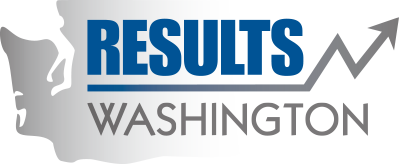Archived: Decrease injury rate from traumatic injuries in manual logging
Data source: WA State Department of Labor and Industries - Data Warehouse
Logging has historically been one of Washington’s most hazardous industries. Due to the dangerous nature of non-mechanized (manual) logging work, its workers’ compensation rates are the highest in the state – an unsustainable $20.18 per hour in 2014 for manual logging employers. The acute hospitalization rate is more than 50 times greater than that for all the other risk classes combined. Manual loggers have a six in 10 chance of being injured each year.
These high injury rates, combined with low hours reported by some employers, nearly doubled the workers’ compensation premium base rate for manual logging over the past five years. This premium rate significantly impacted costs for the manual logging industry and the ability of honest employers to stay in business. Unsustainably high premium rates for honest employers reduces their ability to spend on safety improvements that could improve their injury rates.
In 2012 the traumatic injury rate in logging was 38 per 100 FTEs, as of the second quarter of 2014, the annual injury rate had fallen to 29.5 per 100 FTEs.
Currently, 114 logging companies, representing over 70 percent of the manual logging risk class hours, have joined the logger safety initiative (LSI) and are actively working on improving safety for their companies and employees. Seventy-eight of the 114 participating logging companies have become LSI-certified by complying with all the program requirements and passing a third-party safety audit. In addition, nine landowners have joined LSI and committed to treat safety as a first priority and share this responsibility throughout the industry.
Reported hours in the manual logging risk class increased eight percent as a result of premium audits, helping ensure correct reporting that lowers rates for everyone. The 2015 base rate for manual logging dropped by eight percent. While it is too soon for LSI’s influence on safety and reduced accidents to show results, additional work hours identified through premium audits contributed to this reduction.
- Industry leaders from the WA Contract Loggers Association, WA Forest Protection Association, and the Department of Natural Resources continue to be highly involved with the LSI. Their involvement, collaboration, and support of the initiative is critical to the initiative’s success and ongoing work.
- The LSI Taskforce continues meet on a regular basis and focuses on ways to promote occupational safety, reduce the frequency and severity of workplace injuries and fatalities, increase proper reporting, and explore options for reducing costs, in an effort to create a culture of safety that is pervasive throughout the logging industry in Washington State.
- The LSI Taskforce is establishing a participant review panel to review LSI participants’ safety performance issues or concerns and recommend corrective action, suspension and/or termination as needed. A sub-committee is currently working on identifying the triggering events and the developing the process.
The LSI is creating a culture of safety throughout the logging industry and is re-defining how employers value and prioritize workplace safety activities. However, it will take time and a strong commitment from both the industry and government to truly change the way safety is approached in the logging industry. If you are an employer or worker in the logging community continue to demand safe working conditions and safe work practices. Work together, through the logging safety initiative, to ensure that every logger is trained in safety procedures and is working in the safest possible conditions.
Reported by: Department of Labor and Industries
